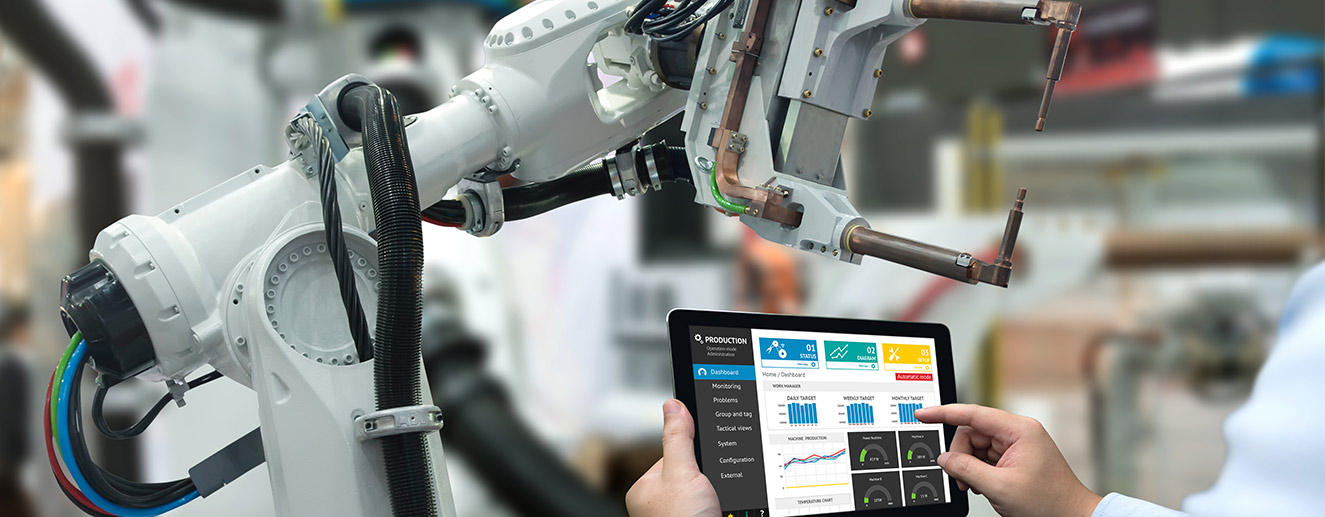Fleet maintenance is very important these days, as it not only keeps both fleet vehicles and drivers safe but also ensures that assets are on the road for an extended amount of time. Thus, your business stays profitable as you complete tasks within the designated time frame, which adds to your reputation and keeps customers content.
Key Takeaways:
- The definition of fleet maintenance
- Benefits of fleet maintenance
- Reasons for requiring fleet maintenance software
- Know about fleet maintenance software and how it works
- Benefits of fleet maintenance software
- Types of fleet maintenance workers
- Organizations that use fleet maintenance with examples
- Role of drivers in the maintenance program
- Fleet maintenance planning and types
- Tips for proper maintenance of assets
- Roles and responsibilities of a fleet manager, along with common challenges
- Setting up and improving fleet management program with Anste’s Connected Fleet solution
- Features to look for in fleet maintenance software
- Reducing maintenance costs for your fleet
- Tracking and managing fleet maintenance
What is fleet maintenance?
Keeping vehicles running smoothly and operating in top-notch condition, to ensure they are safe and stay on the road for a longer period of time, is defined as fleet maintenance. It is imperative to develop a preventative maintenance program for your fleet because it helps to minimize operating costs by a great deal. Take a look at the main objectives of fleet maintenance:
- The fleet vehicles should be safe for employees, customers, and others on the road.
- A reliable fleet should be maintained sans unexpected problems or downtime.
- Extend lifespan for assets by reducing repair and fleet replacement expenses.
What are the benefits of fleet maintenance?
Managing a fleet is anything but easy – there are several aspects involved that have to be tracked properly, in order to ensure smooth operation, and the bottom line is unaffected. Fleet maintenance has the following benefits:
- Keeping the fleet safe
Did you know the FMCSA states that 27% of accidents involving one truck and one passenger vehicle were caused due to brake problems? A safe fleet means maintaining the vehicles in good condition, with all components functioning as they should.
- Protecting employees
If your drivers are operating vehicles that haven’t undergone routine maintenance in months, then their safety is at risk. Fleet maintenance keeps your drivers safe and helps avoid exorbitant costs associated with an accident like higher worker’s compensation premiums, insurance costs, legal fees, and vehicle repairs or replacement.
- Maintaining reliability
Even if one vehicle is out of commission due to repairs, your business loses quite a lot in revenue. Preventative maintenance programs can help to address problems like faulty parts and repair them so that reliability isn’t affected.
- Lower maintenance costs
As mentioned, if you develop a preventative maintenance program to fix things before they become major hurdles, then you can save big. For instance, you should check for wear and tear of the brake pads regularly, or change the engine oil before the check engine light comes on.
- Lesser compliance issues
You need to comply with several state, federal, and local laws, and keep regulations reporting, registrations, safety scores, inspections, etc. in mind. Maintaining your fleet ensures you have fewer compliance issues to deal with.
- Reduced fuel costs
As per Automotive Fleet Magazine, the correct maintenance procedure can enhance fuel economy by almost 40%. Simply changing the oil and filters can give a boost in miles per gallon.
- Customer satisfaction
A well-functioning fleet means tasks get completed on time without delay, which means customers will be more than happy with the service provided.
Why do fleets need fleet maintenance software?
The ultimate responsibility for a fleet’s health depends on the manager. They have to ensure proper fleet maintenance, inspection compliance, vehicle resale or acquisition, driver retention, fuel usage, and customer satisfaction. It isn’t possible to keep track of everything manually, so fleet maintenance software is a must for the following reasons:
- Regulate fuel consumption to prevent wastage and comprehend when a particular asset loses efficiency.
- Get alerts about malfunctioning components and systems.
- Get notified regarding routine maintenance schedules for each vehicle and when it should be done.
- Be on the uptake about parts and inventory, so that service and repair times are kept to the absolute minimum.
- Recall information is generated as per vehicle registration data, so you know when they are due for parts replacement.
- Staying informed about sup-optimal processes and make changes accordingly.
- Managing fleet aging properly – helps to understand when the vehicle should be replaced with a newer one.
- Tracking drivers and assets in case there is an incident on the road.
What is fleet maintenance software and how does it work?
Fleet maintenance software improves communication between managers and drivers, which improves the overall functionality of the fleet. It is incorporated with the latest technology and accurate GPS tracking, so drivers are able to send alerts immediately if they sense malfunctioning components, excessive idling, and so on. The software keeps track of routine inspections of assets, manages inventory issues, and identifies and addresses maintenance concerns, so vehicles are always in great condition. The software gives you complete control over fleet vehicles. Here is how it works:
- Automated email and text reminders ensure that dates of vehicle inspections for maintenance aren’t neglected.
- Seamlessly manages work schedules to prevent unnecessary downtime.
- Ensure assets are in good condition by maintaining correct and detailed records.
- Track and report the information, time, and costs of the maintenance of your assets to keep you informed regarding all expenses.
What are the benefits of using fleet maintenance software?
Operating fleets become all the more easy and streamlined with the right fleet maintenance software. Here are its benefits:
Automation
Software solutions are designed for fleets of all sizes, so they can be scaled as per requirements. It automates processes like scheduling vehicle inspections, keeping tabs on driver behavior, knowing when components are malfunctioning, and so on.
Reduces downtime
Be it proactive maintenance that checks for early warning signs, or reactive maintenance that sends an alert about a component requiring fixing, the software ensures your vehicles are on the road for a longer period of time. It helps to cut down drastically on vehicle downtime.
Meeting compliance laws and guidelines
Commercial vehicles are subject to meeting a wide range of compliance requirements, which isn’t possible to track manually. The software lets you stay on top of these compliance issues by monitoring aspects like driver checks, defects, inspection sheets, daily vehicle checks, several types of reporting, insurance, and so on.
A centralized hub for reporting
The software provides a platform for maintaining comprehensive records about each vehicle. Reports can also be extracted for virtually any purpose, including complying with any insurance claims, audits, etc.
What are the types of fleet maintenance workers?
Fleet maintenance usually involves these types of workers:
- Fleet Managers
As is evident, their role is to supervise the whole fleet when it comes to creating maintenance plans and service schedule. They are also involved with acquiring new vehicles and selling off older ones.
- Drivers
They are responsible in a major capacity when it comes to the daily diagnosis of the vehicle’s condition. For instance, if they see warning lights or spot signs of trouble, they need to convey this information to managers immediately. They should be trained to conduct regular inspections too.
- Mechanics
A dedicated fleet mechanic sees to the regular maintenance of the entire fleet, by performing repairs, fixes, and replacements, as and when needed.
What are some examples of fleet maintenance?
Transport companies
Consider a trucking company with cargo trucks that have to cover long distances and encounter a variety of climates and weather conditions. It is a must for this company to have a robust maintenance structure so the vehicle doesn’t break down and get stranded in the middle of nowhere. Moreover, the timely completion of tasks has a direct impact on the bottom line of the company. Delays mean missed deadlines, dissatisfied customers, revenue leakage, and damage to credibility.
Vehicles owned by companies
Any organization that maintains company vehicles for employees comes under this category. If employees travel in vehicles that aren’t in peak condition, it poses a huge safety risk that might lead to accidents. Thus, it is in the best interest of both the company and its employees to invest in a fleet maintenance program.
Which organizations utilize fleet maintenance?
All organizations using company-owned vehicles must have a fleet maintenance program as well. Take a look;
- Car rental agencies – There is a wide range of variations in customers and driving styles, so detailed individualized maintenance is performed on every vehicle.
- Government vehicles – General-use vehicles used for transporting government workers are regularly inspected.
- Trucking companies – Maintenance is performed either on-site or at the vehicle’s destination.
- Farming & construction – Regular maintenance is performed on all farming and construction equipment.
What role do drivers play in fleet maintenance?
Since drivers spend a great deal of time in fleet vehicles, they have a crucial role to play when it comes to fleet maintenance. It is necessary to train them properly on how to conduct both pre-and post-haul inspections on a daily basis to satisfy inspection report requirements (as specified by the transport authority of where the company operates). It is also important in order to detect warning signs that something might not be functioning the way it should.
What is fleet maintenance planning?
There are various tools, technologies, and software available that make it convenient to develop and implement an effective fleet maintenance program. You just need to consider the following aspects while structuring a fleet maintenance plan – here goes:
- Checklist to be covered during preventative maintenance.
- Person (s) responsible for preventative maintenance services.
- Timing of the service.
- Come up with a simple system for record-keeping and maintenance history.
- Resources for more information regarding fleet maintenance.
What are the types of fleet maintenance?
Fleet maintenance can be classified into two categories:
Proactive
This type of scheduled maintenance is to stay on top of planned preventative maintenance schedules. It means checking the vehicles regularly to identify minor issues before they become major hurdles that lead to costly repairs or replacement of parts. Thus, small fixes can be implemented, before they become a more serious and expensive problem.
Reactive
Even if you develop an optimized fleet maintenance schedule, there are bound to be problems in between routine checkups. You can’t plan for flat tires, broken components, issues caused by accidents, etc. This is where reactive or unscheduled maintenance comes in. Remember that emergency repairs are almost always more expensive than routine ones and involve more vehicle downtime. But then again, if you make routine preventative maintenance a priority, then several types of problems can be easily avoided.
Tips for effective fleet maintenance
What are the types of fleet maintenance?
Even though your checklist should be based on your fleet’s requirements and unique makeup, it should contain these items:
- Engine oil and filter changes
- Transmission fluid
- Fuel system
- Cooling system
- Engine and transmission mounts
- Driveshafts or CV joints
- Belts and hoses
- Tune-ups
- Electrical system components
- Braking system
- Steering and suspension system
- Tyres, wheels, and rims
- Exhaust system
- Undercarriage and frame
- Exterior and interior lights
- Body, glass, and mirrors
- Windshield wiper system
- Horn
- Seatbelts and seat structures
- Fluid leaks
- Auxiliary systems
Establish rapport between drivers and repair technicians
Drivers are the first line of defense when it comes to unexpected breakdowns and repairs. Train drivers to complete pre and post-trip inspections daily, so you can address issues while they are still minor, and prevent costly unscheduled fixes down the line. For instance, they should monitor basic safety items like tires, brakes, steering, etc. along with performance issues like misfires and rough idling. They need to report any vehicle problems right away. Based on what drivers report, repair technicians or in-house mechanics can perform detailed inspections on components and systems. If this service is outsourced, always provide the fleet servicing vendor with your own preventive maintenance checklist.
Examine both scheduled and unscheduled maintenance information
Come up with a preventative maintenance schedule that works for your fleet. Kilometers traveled, engine hours, fuel usage, and calendar time are the typical guides used to create a schedule. You should also keep tabs on the number of breakdowns, tows, jumpstarts, and emergency repairs, in order to identify patterns that might require adjustments to the schedule.
Enhance driver performance
Leveraging telematics data provided by fleet maintenance software allows you to examine driver’s performance, so you can offer necessary feedback and make recommendations. Anstel’s Connected Fleet solution helps to monitor driving patterns and identify troubling signs such as harsh braking, rapid acceleration, sharp turns, excessive idling, etc. that can lead to fuel wastage and early wear and tear of components. The technology helps to train drivers to perform better and adhere to rules and regulations on the road.
Who is a fleet maintenance manager? What is the role of a fleet maintenance manager?
As mentioned, a fleet manager has to be responsible for the entire fleet. Their duties range from hiring and driver HR to maintaining maximum fleet efficiency. To put it in a nutshell, they have to manage vehicles, drivers, and other assets in the most efficient manner. Their responsibilities include the following:
- Scheduling routine vehicle maintenance and emergency repairs.
- Guaranteeing overall quality and safety of fleet vehicles.
- Working with equipment suppliers, technicians, and mechanics.
- Registration and licensing of newly acquired vehicles.
- Ensuring compliance of assets with company policies, applicable laws, regulations, and safety standards.
- Creating a budget for maintenance and adhering to it.
- Working with fleet management teams, drivers, and employees to conduct daily operations and achieve business goals.
- Keeping precise and updated records of routine maintenance and repair history.
What are the common challenges of a fleet manager?
As is evident, the role of a fleet manager is anything but easy. Here are a few of the challenges they have to face:
- Even with the latest technology at their disposal, the skills and components required to maintain modern fleet vehicles are quite complex and costly.
- There is a shortage of experienced mechanics and technicians.
- Budget allocation is lesser than what is required for a comprehensive fleet management program.
- Managing costs related to repairs, maintenance, fuel, and so on, which keep going up.
How can you set up and improve your fleet maintenance program? How can Anstel help in fleet maintenance?
One of the main responsibilities of fleet maintenance managers is to keep up-to-date records of vehicle maintenance servicing. This is where Anstel’s fleet management software – Connected Fleet, comes in handy. By automating maintenance reminders for performing tune-ups and oil changes and integrating past service records, it alerts managers about which components have to be repaired or are scheduled for a routine inspection. Thus, it eliminates the risk of human error.
This type of software uses GPS to connect to the vehicle’s onboard diagnostics system. An alert is sent via text or email, whenever a maintenance issue occurs, so fleet managers can determine the course of action. Detailed records can be maintained that:
- Indicates when a vehicle’s registration should be renewed.
- Shows the renewal period for fleet insurance.
- Monitors vehicle inspection dates.
- Keep tabs on and protects fleet vehicles and assets remotely.
This way, the software ensures all vehicles are efficient, compliant, safe, and in excellent condition.
What features should you consider while choosing fleet maintenance software?
Fleet technology continues to expand over the years, and with proper fleet maintenance software, managers get access to a fast and mobile platform capable of housing all crucial data at a central location. Keep the following features in mind:
- User-friendly
Shifting to a new system isn’t easy, but the transition should be smooth and comfortable. A user-friendly and intuitive interface makes it possible.
- Manage assets
Regardless of the size of your fleet, you have to remain in control of critical aspects. The software should offer functions that let you build a customizable database, create codes, and group your assets. It basically provides a hub for information about your fleet that is easily accessible, shareable, and searchable.
- Maintenance management
Proactive maintenance is a must so that sudden breakdowns don’t lead to massive revenue leakage. This feature lets you schedule repairs and maintenance when needed, schedule routine inspections, know when a unit is going to be due for service and associated downtime, and keep detailed records and generating reports.
- GPS tracking
Zeroing in on the position of vehicles in real-time, which gives you a clear idea if drivers are stuck in traffic, are driving recklessly, or have made unnecessary stops.
How to reduce fleet maintenance costs?
Not only does routine maintenance detect problems before they become serious, but they help to save money too. While you may think getting vehicles serviced constantly would cost you more, it is less expensive over time, as compared to delaying a routine inspection until a problem arises. For instance, paying for frequent oil changes is more economical than replacing a whole engine.
Moreover, when a vehicle experiences a major technical problem, it always means losing money over and above what the repairs cost. Even if a single vehicle is taken off the road for an extended period of time for costly repairs, the resulting unplanned downtime means wasted wages and delayed loads, both of which impact the bottom line.
Fleet maintenance software provides reports with details regarding the status and condition of every vehicle across the fleet, which alerts managers to potential problems. Following organized maintenance, schedules mean that vehicles stay in mint condition for a longer period of time, which increases their resale value.
How to track fleet maintenance?
Fleet managers understand the importance of keeping track of vehicles that are due for maintenance – missing out on these schedules can prove to be costly and damaging for your business. The following aspects can be used for tracking fleet maintenance:
- Staying updated regarding fleet insurance.
- Knowing when it is time to renew vehicle registration.
- Keeping tabs on dates scheduled for routine vehicle inspections.
How to manage fleet maintenance?
It is imperative to keep your vehicles and drivers safe, without compromising on productivity and efficiency – that is the key to manage fleet maintenance successfully. Here are a few tips:
- Preventative maintenance
When vehicles are maintained properly, it means fewer unscheduled repairs and downtime. It might include oil changes, tire rotation/inspection, and general safety vehicle inspections. Fixing a problem beforehand means saving on costly repairs later on!
- Total cost of ownership
Monitor maintenance expenses so you know if they start to rise based on the vehicle age. Go through the manufacturer’s warranty coverage and how it impacts the total cost of ownership. It is imperative to know about the residual value of the asset, trends in the used vehicle market, and the optimal time to sell the vehicle for a cost-effective fleet.
- Inform drivers about company policy
Drivers should be made well aware of responsibilities and company vehicle-use policies. They need to know the preventive maintenance schedule, policies regarding maintenance and repairs, and stay informed about the right course of action if the vehicle needs repair or is in an accident.
- Work with your fleet maintenance provider
If you face a setback when the vehicle is in for repairs, don’t hesitate to inform your fleet maintenance provider, so they can step in and resolve the problem.
Parting Thoughts
Fleet maintenance solutions help to minimize downtime, improve customer satisfaction and optimize productivity for your fleet. The software automatically records data about pre-and post-trip inspections and sends a digital report to managers, so they become aware of troubling issues in real-time.

 Global
Global Australia
Australia India
India




